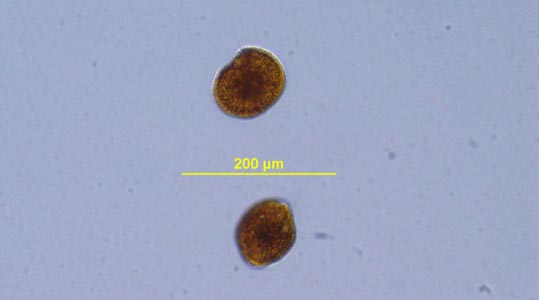
Gambierdiscus spp. grow epiphytically on benthic substrates, mainly macroalgae.
Benthic Habs
Harmful algal blooms (HABs) occur when algae grow out of control and have harmful effects on the shellfish, fish, mammals, and birds associated with the aquatic environment the bloom occurs in. Some of the algae that produce HABs also produce toxins that detrimentally impact organisms that use the water in which they grow. Toxic effects can also impact humans and when they do, they can be very debilitating. Not all of the algae that bloom are those that living in the water column as members of the plankton (e.g., Karenia brevis, the dinoflagellate that causes “red tides” in the Gulf of Mexico). In fact, some HAB species live in the benthos (or, bottom) region of the water column and can grow on various benthic substrates including sediment, coral, macroalgae, and/or seagrasses. These species are referred to as Benthic HABs.
One problematic Benthic HAB group are numerous species that belong to the genus Gambierdiscus. Gambierdiscus is a genus of unicellular, dinoflagellate algae. Several Gambierdiscus species produce precursor toxic compounds (secondary metabolites) that, when incidentally eaten by herbivorous invertebrates and reef fish, are converted into more potent tertiary compounds called ciguatoxins (CTXs) following bioaccumulation and metabolism within the organism. As tropic transfer occurs through the food web, these compounds are further converted resulting in high trophic level fish being contaminated with toxic CTX. Transfer of CTX to humans can then occur if humans eat CTX-contaminated finfish resulting in the disease, ciguatera fish poisoning (CFP).
Presented by the Marine Ecotoxicology & Biodiscovery Lab, Dauphin Island, Alabama